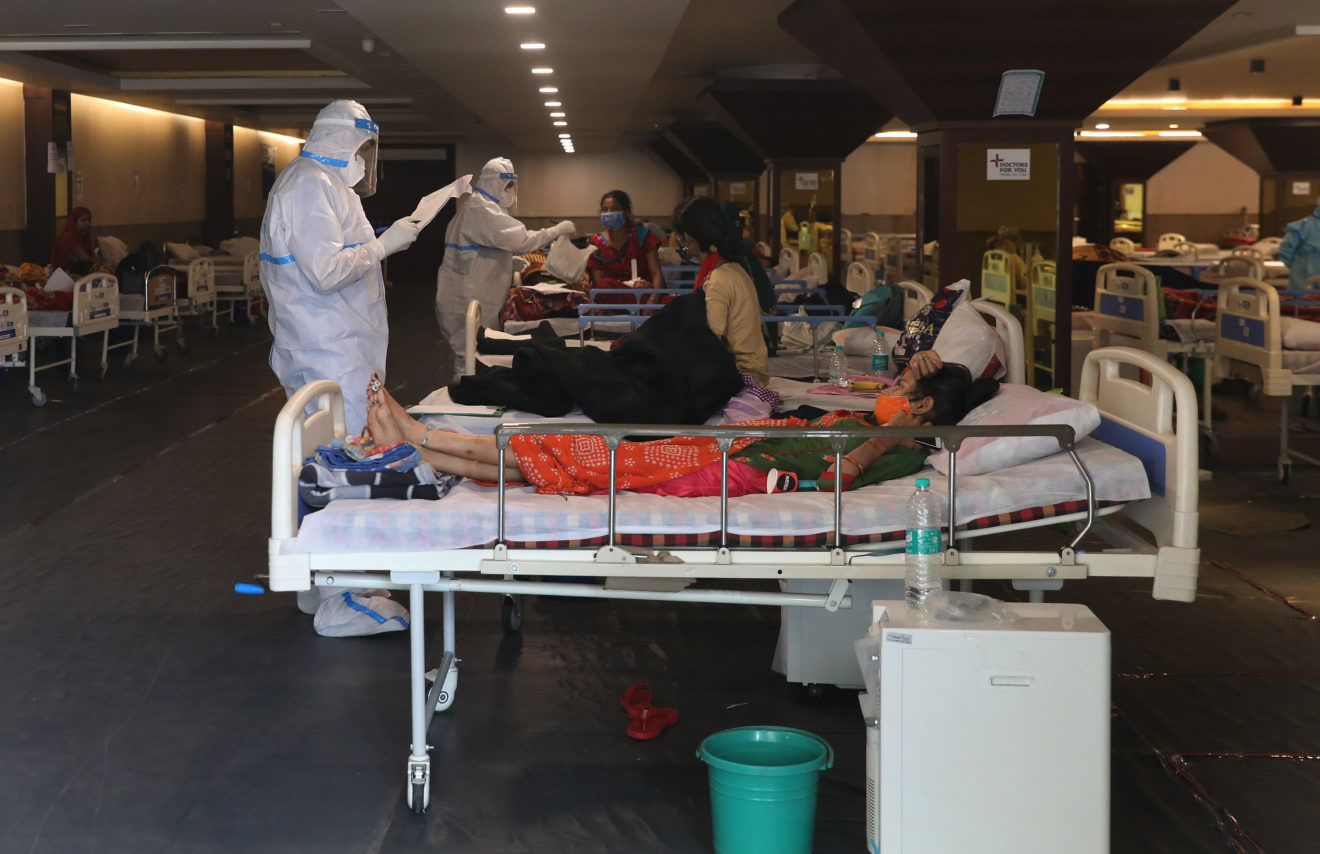The situation is so bad that people are hoarding oxygen, and crematoriums can’t cope with demand.

BANGALORE, India — While the West focuses on vaccination numbers and when people can sit outside for a meal, India is struggling to cope with a COVID-19 crisis.
On Saturday, India recorded the highest number of cases in the world, the first time it had held that dubious honor. On Monday, some 350,000 new cases were reported, taking the country’s total to 1.7 million. More than 2,500 people a day die from the disease. Almost half of all new cases reported globally are in India.
And those figures, experts say, are nowhere near the actual totals. “We under-report death numbers every day,” said a doctor who works in one of the biggest government hospitals in New Delhi, who requested anonymity, as he is not authorized to speak to the media. “I have never seen so many patients die in a day.”
The situation is similar in other parts of the country. In the western state of Gujarat, many COVID-19 patients have been left off death lists as hospital authorities mention other conditions as the primary cause of death, according to The Hindu newspaper.
To combat the spread, parts of the country, including New Delhi and Mumbai, are back under lockdown. But that creates a whole new set of problems, with people stranded between cities and villages, and often forced to set up makeshift homes next to rivers and highways. For example, thousands of people have pitched tents on the banks of the Yamuna River, on the outskirts of Delhi, where they rely on charity for food.
“The virus not only affects our health, but causes near-death experience by taking away our livelihoods,” said Dharmpal Singh, a rickshaw puller who is camped outside New Delhi.
New variant
Until February, India seemed to have controlled the spread of the virus. While Europe and the U.S. were battling rising numbers of deaths, India was easing its lockdown. But the country appears to have let its guard down a bit too quickly. People stopped taking precautions, election rallies with thousands of unmasked people were held and religious congregations across the country involving millions of people were not restricted.
Now, India is said to have been hit by a new variant, a so-called double mutant strain that contains genetic mutations from two different versions of the coronavirus and the results have been devastating.
To make matters worse, less than 10 percent of Indians have received even one dose of the vaccine, despite India being the world’s leading vaccine manufacturer.
The country had planned to ship millions of doses to other countries. But, given the shortfall within the country, those exports have stopped.
The crisis has resulted in travel bans from Canada, the U.K., Hong Kong, Singapore and New Zealand. The U.S. State Department has advised people against going to India without bringing in a ban.
One of the impacts of the crisis is that people are hoarding oxygen and vital medicines in their homes, causing shortages in hospitals. “Hoarding of injections like remdesivir and oxygen in homes is creating a panic and this hoarding is causing a shortage of these medicines,” said Randeep Guleria, the director of India’s Institute of Medical Sciences, in a statement released by the ministry of health on Sunday.
In a New Delhi hospital, 20 patients in a critical care unit died after the oxygen pressure dropped. On April 21, a government official told Delhi High Court that medical demand for oxygen had outpaced daily production capacity.
The Supreme Court ordered the federal government of Prime Minister Narendra Modi to come up with a national oxygen distribution plan.
The problems don’t even end after death. In cities across the country, crematoriums are overflowing with dead bodies.
“We have not stopped burning bodies,” said Hitesh Mavani, who works in a crematorium in Vadodara. “We work in shifts now.”
In Kanpur, bodies are being burned in the city’s parks as crematoriums are full and BBC Gujarati reported that the chimneys at crematoriums in Gujarat were melting because the gas furnaces were burning round the clock.
Published in: Politico
Published on: November 1 2019
Link: https://www.thehindu.com/society/this-dalit-woman-from-bihar-faked-her-death-to-protect-her-land/article29854204.ece
